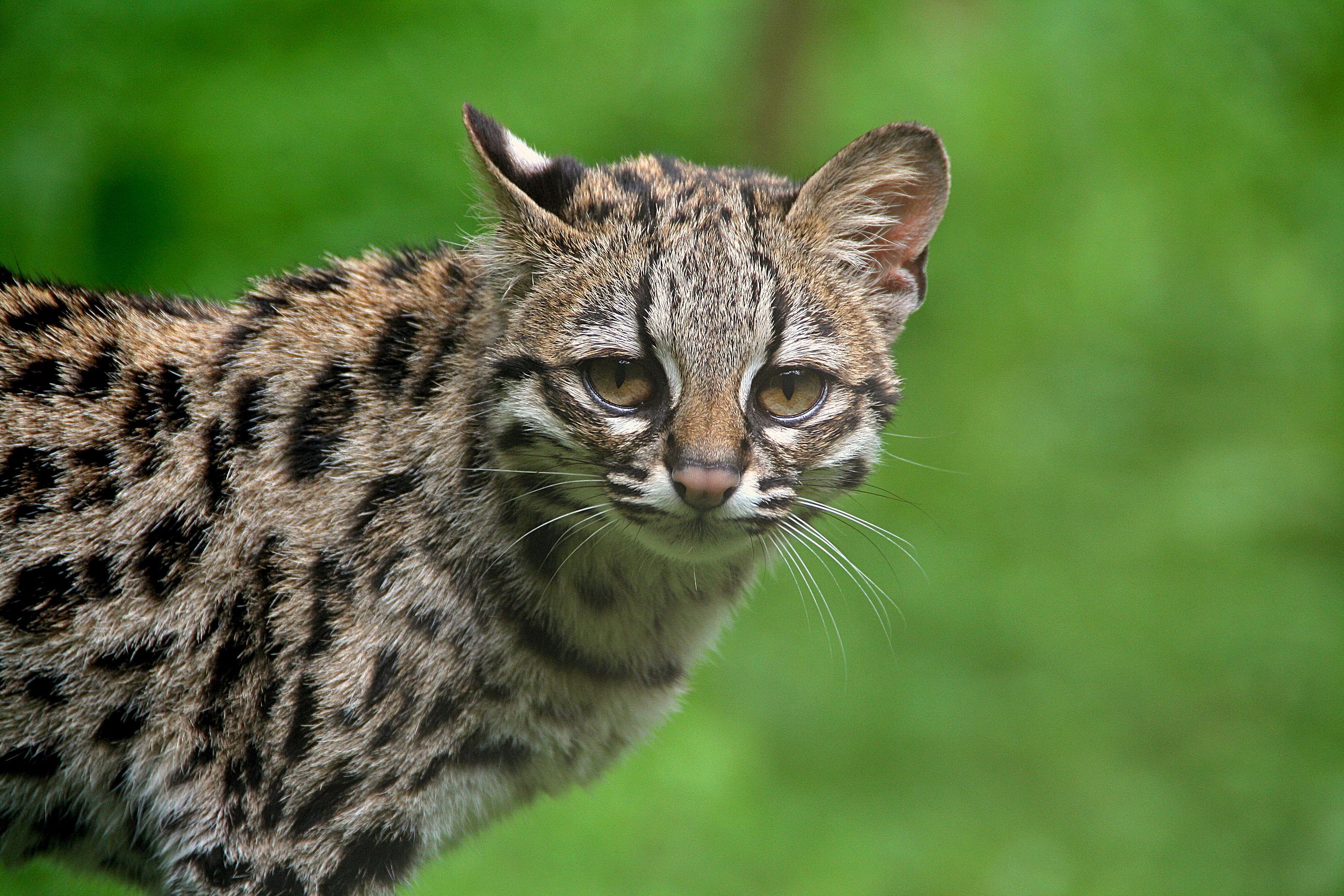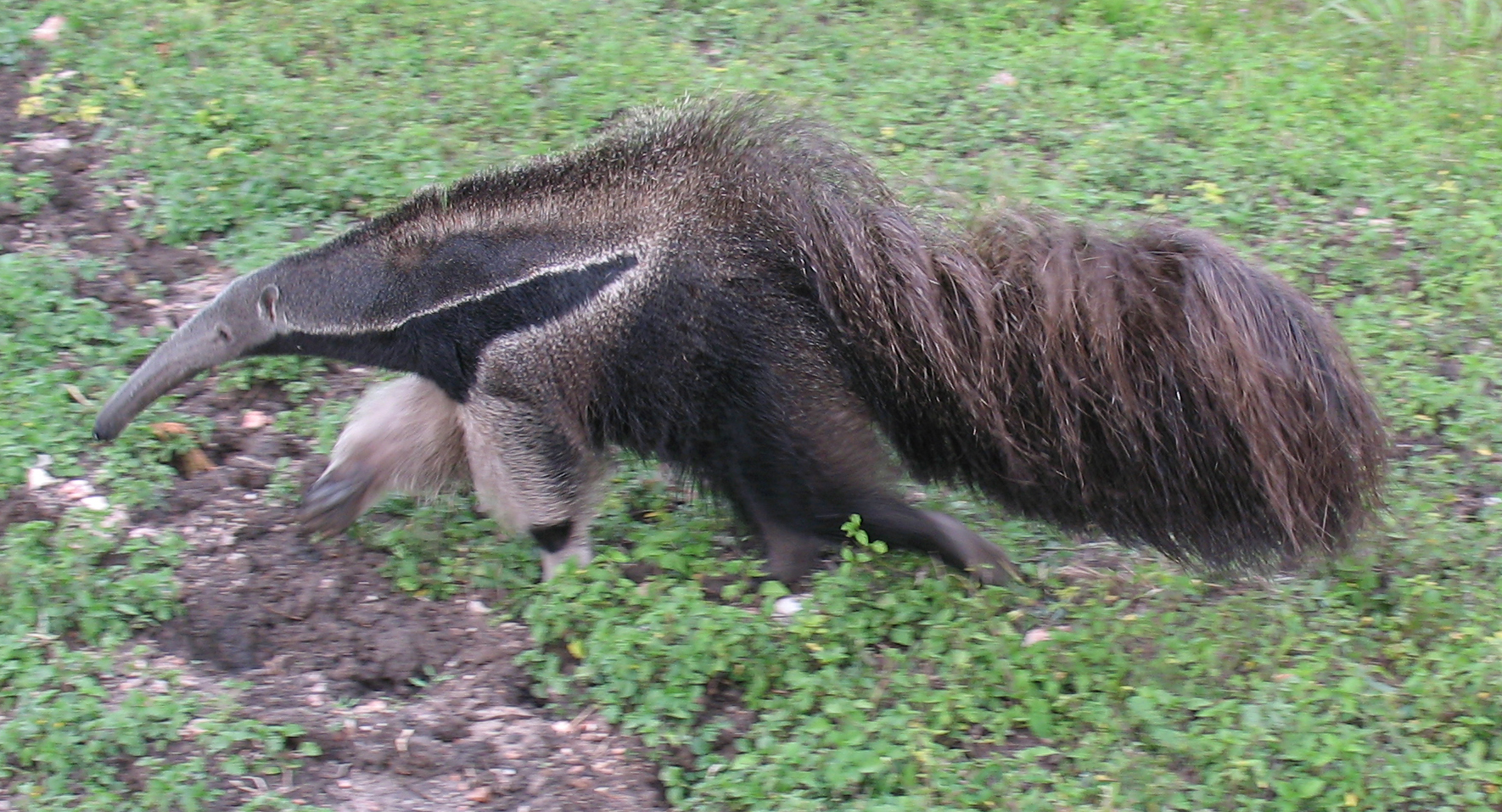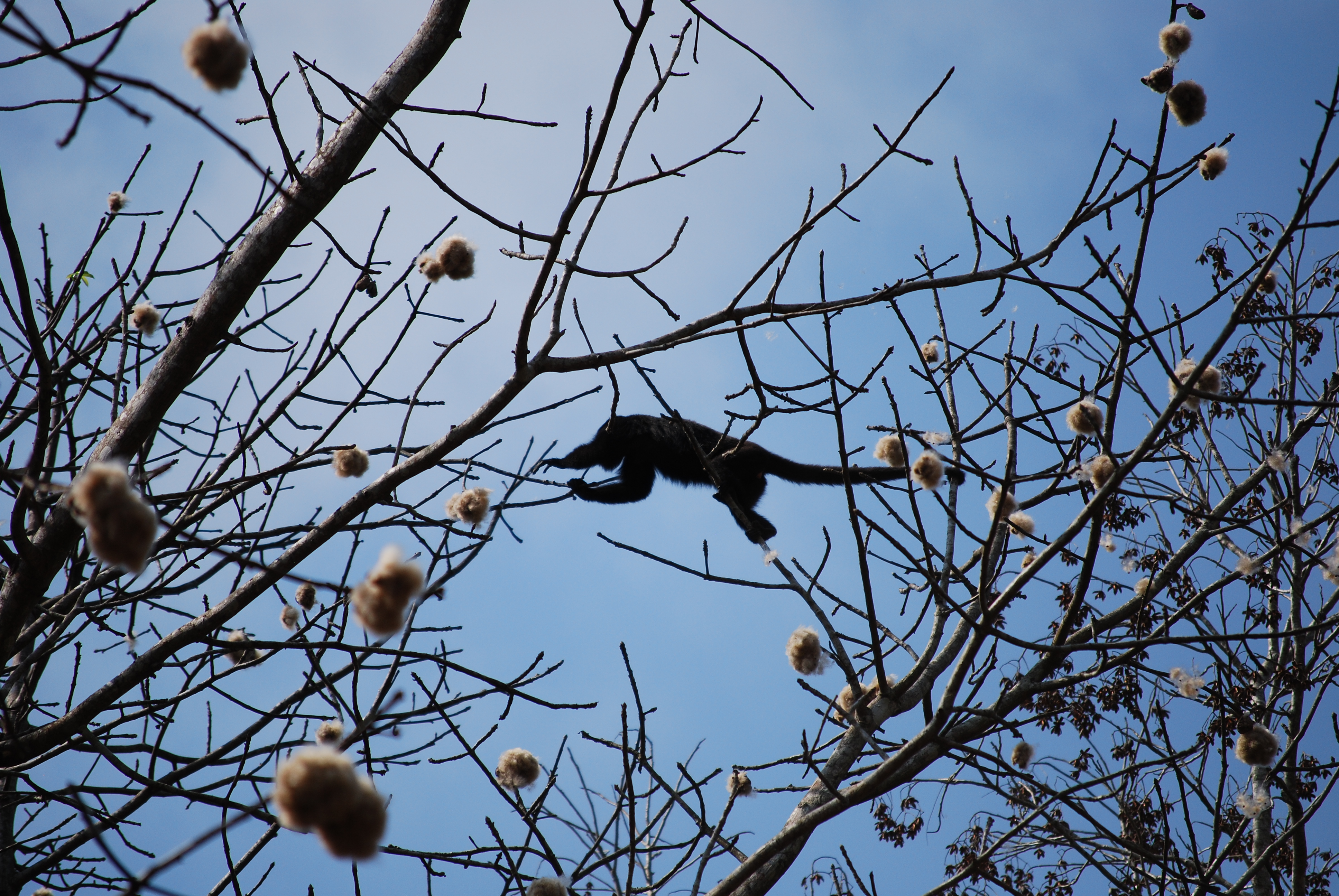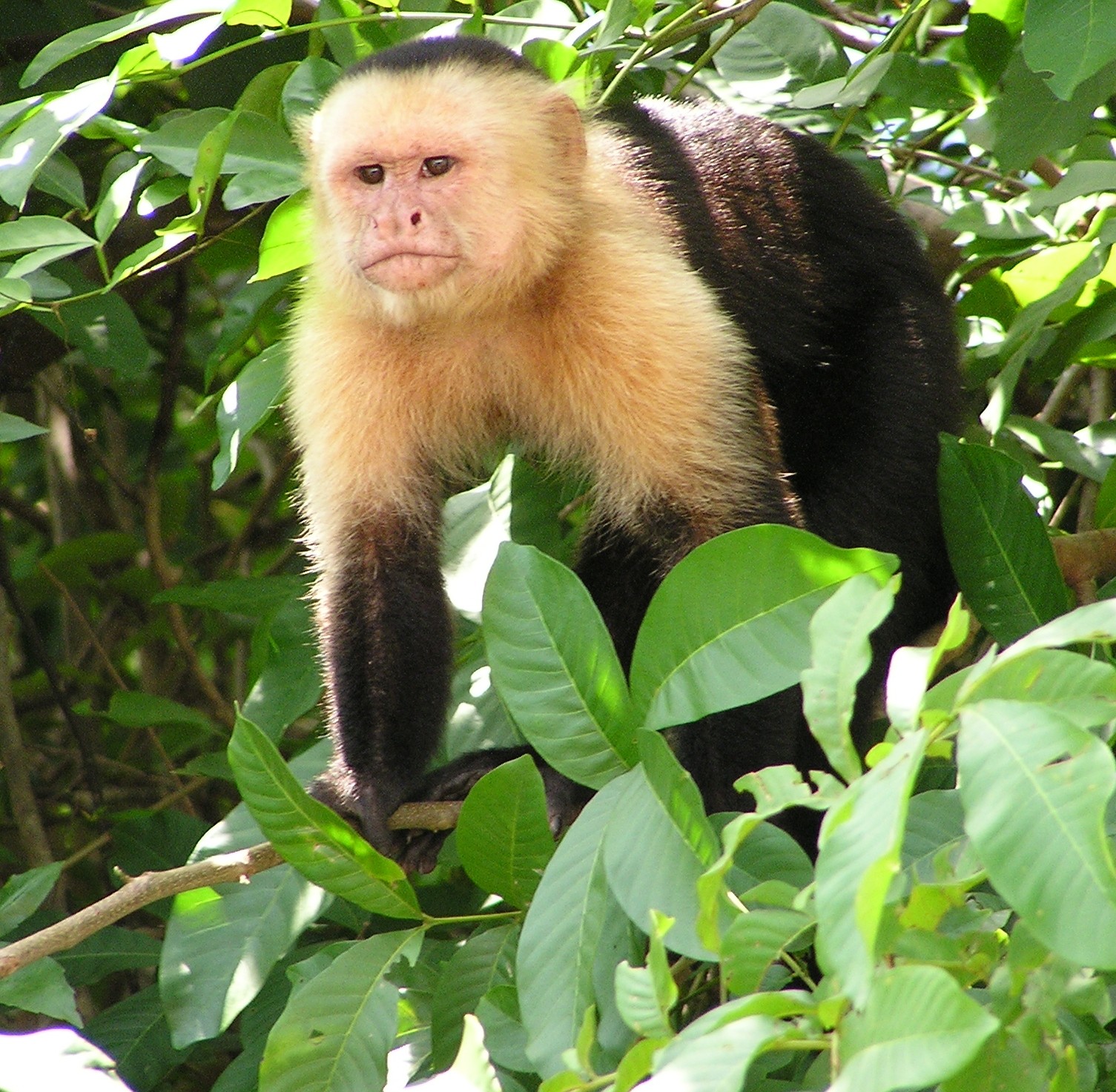Central American Atlantic Moist Forests
The ecoregion’s land area is provided in units of 1,000 hectares. The protection goal is the Global Safety Net (GSN1) area for the given ecoregion. The protection level indicates the percentage of the GSN goal that is currently protected on a scale of 0-10.
Bioregion: Central American Mixed Forests (NT25)
Realm: Central America
Ecoregion Size (1000 ha):
8,998
Ecoregion ID:
450
Conservation Target:
70%
Protection Level:
6
States: Guatemala, Honduras, Nicaragua
The margay is a small spotted cat which is nocturnal and semi-arboreal, and with a wide distribution from Mexico through Central America and into South America. It looks very similar to the ocelot but is slenderer, with a longer tail for balance and bigger eyes making it more adapted for moving among tree branches at night. Margays are especially suited for climbing in trees, their back legs can turn inwards allowing them to go up and down tree trunks and branches. In fact, they are quite acrobatic and have been recorded preying on birds and monkeys while jumping throughout the branches.

The flagship species of the Central American Atlantic Moist Forests ecoregion is the margay. Image credit: Creative Commons
This ecoregion is located along the Caribbean lowlands of Central America through southeast Guatemala, a narrow strip in Honduras above Sula Valley that widens further east, and in Nicaragua these moist forests cover almost half of its eastern section. This ecoregion is characterized by a relatively flat landscape with foothills in the western sector. The geology of the region is young, having formed some 5 million years ago. Elevation ranges from sea level to 1,000 m.
The annual rainfall reaches 5,000 mm in Guatemala forests, 2,000 mm in Honduras, and ranges from 2,750–6,000 mm in Nicaragua. Common tree species at low elevations include gumbo-limbo, crabwood, Spanish cedar, kapok, Spanish elm, mahogany, and Terminalia amazonia. At higher elevations, mameyito, Brazilian firetree, and various epiphytes (plants growing on other plants) can be found. Elfin forest occurs at the highest altitudes and includes shorter flora like Clusia salvinii, Magnolia sororum, and hot lips (named for its distinctive red leaf shape).

Giant anteater. Image credit: Creative Commons
The Central American Atlantic Moist Forests are rich in biodiversity, although endemism rates are low among most taxa with the exception of some birds. Wide-ranging mammals common to the area include oncilla, olingos, margay, Geoffrey’s spider monkey, capuchin, mantled howler monkey, and giant anteater. These forests are considered an Endemic Bird Area.
Some of the restricted-range birds found in this region are also found in the northern section of the Isthmian-Atlantic Moist Forests ecoregion. Most of these birds are found at elevations below 1,000 m in tropical forest and secondary growth. The snowy cotinga, streak-crowned antvireo, and grey-headed piprites are range-restricted species found in the northern part of the ecoregion.

Howler monkey. Image credit: Thelma Datter, Creative Commons
Although some large blocks of intact habitat still exist, few areas are under formal protection. In Guatemala, Chocon-Machacas was created to protect the manatee populations found in the Rio Dulce. The largest natural forest in Honduras and in the ecoregion falls within Río Plátano Biosphere Reserve. Also, in Honduras, Pico Bonito National Park contains pine-oak and moist forests. In Nicaragua the Cerro Cola Blanca Natural Reserve is threatened by spontaneous migrants to the area.

Capuchin. Image credit: David M Jensen, Creative Commons
The once vast Atlantic lowland forests have been seriously fragmented in recent years. Flat areas with alluvial soils have come under banana cultivation, while forests on the less fertile soils have more recently been logged and converted to cattle pasture. New access roads and incentives for migration to these areas in the last few decades have encouraged settlement and resource extraction in the area, such as logging. The northern part of Honduras has been particularly affected by agriculture and cattle-ranching expansion. Spontaneous settlements are expanding the agricultural frontier. Most of these settlers are poor farmers that settle illegally even in Natural Reserves, as is the case of the Cerro Cola Blanca in Nicaragua.
The priority conservation actions for the next decade will be to: 1) establish coordination between governmental institutions and local farmers to address social issues; 2) hold awareness programs and educational workshops about biodiversity benefits for locals; and 3) encourage sustainable methods into the agriculture and ranching sectors.
Citations
1. Powell, G. Palminteri, S. 2019. Central American Atlantic Moist Forest. Accessed June 25, 2019.
2. Herrera-MacBryde, Olga and ANCON. 1997. Darien Provience. In S. D. Davis, V. H. Heywood, O. Herrera-MacBryde, J. Villa-Lobos, and A. C. Hamilton (editors), Centres of Plant Diversity: A Guide and Strategy for their Conservation, Vol. 3 The America. IUCN, WWF, Oxford, U.K.
3. Jarquin, Heberto. (March 1, 2001). Peligra Reserva Forestal Cola Blanca. La Prensa. Managua, Nicaragua.



